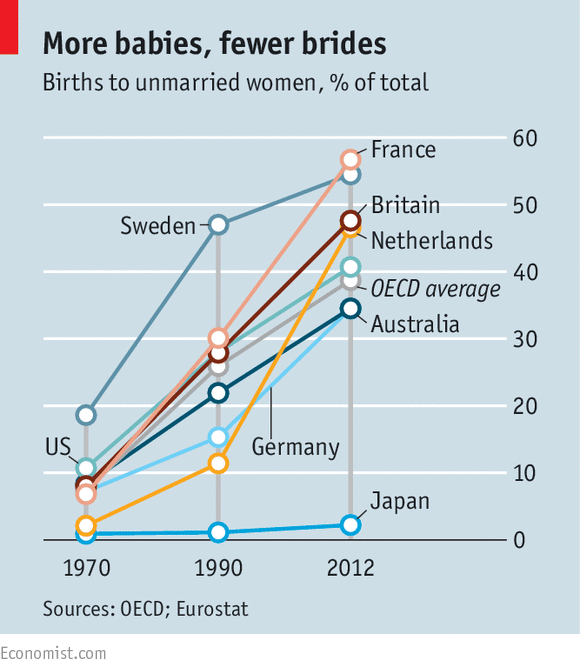Carriage and horse
From The Economist:
Births out of wedlock are becoming the norm. How should governments respond?
BRITAIN is nearly there; America not far behind; France passed the milestone in 2007. As couples wait longer to marry, and fewer eventually do, the number of countries where more births are out of wedlock than in it has risen to more than 20. Rates across the OECD group of 34 mostly rich countries vary hugely, from 2% in Japan to 70% in Chile. But overall the average is 39%—more than five times what it was in 1970 (see charts).

But efforts to persuade people who otherwise would not marry to do so have generally failed. Isabel Sawhill of the Brookings Institution, a think-tank, says that a plethora of policies in America, from tweaking incentives in the benefits system to teaching couples how to be better domestic partners, have had little or no effect on marriage rates. Better, she says, help women to avoid unplanned pregnancies and delay childbearing at least until they finish school and are in a solid relationship, whether married or not.
Governments must still decide what to do when cohabiting couples break up or one partner dies. They tend to take one of three approaches: to treat unmarried couples like married ones if they have been together more than a couple of years; to treat them as if they were single; or to offer several formal alternatives to marriage and hope that couples will choose the one that suits them best.





